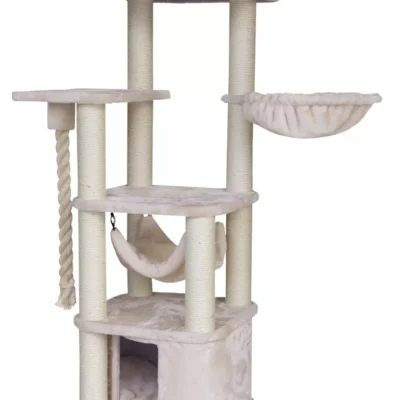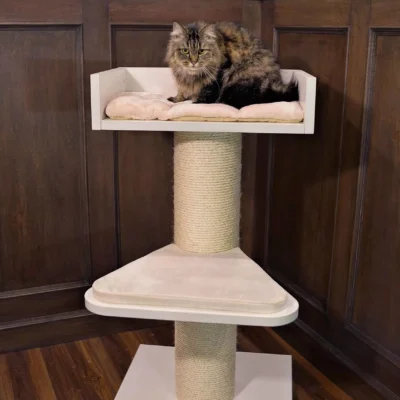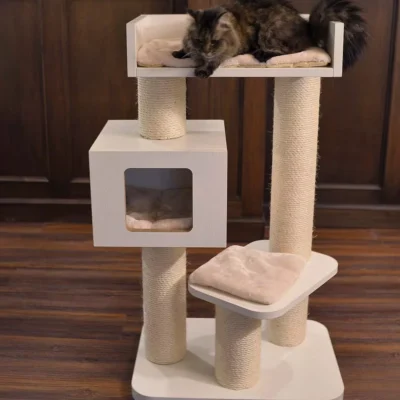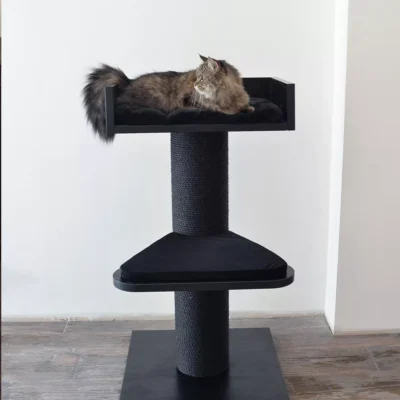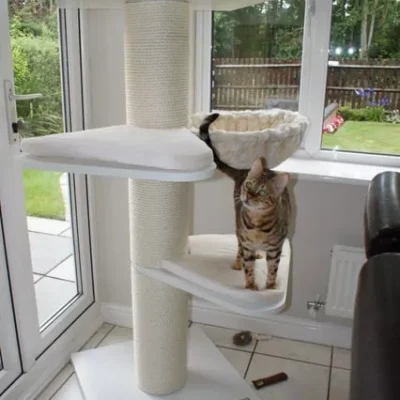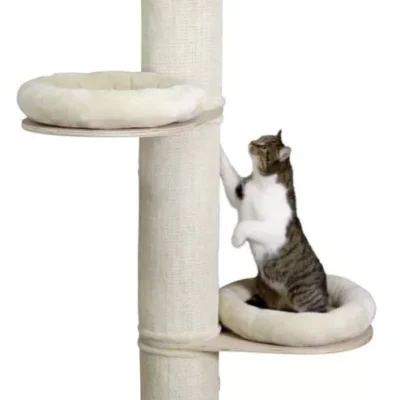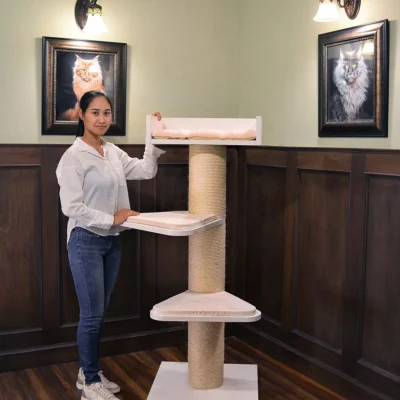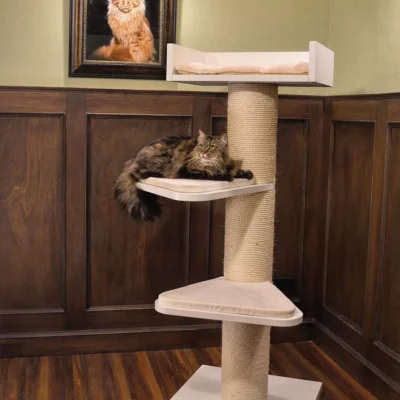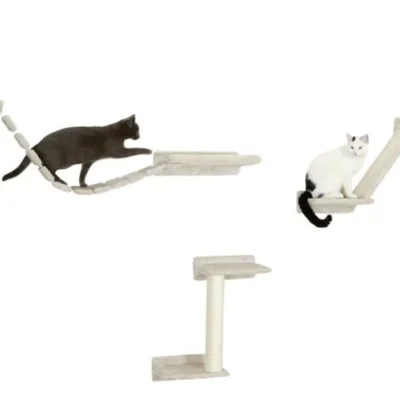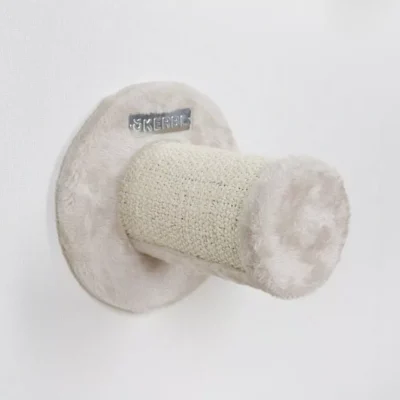0
Microchipping is a modern technology used to enhance the safety and identification of pets. This small procedure involves implanting a tiny microchip, roughly the size of a grain of rice, just beneath the animal’s skin, usually between the shoulder blades. Each microchip contains a unique identification number that can be read with a microchip scanner. When scanned, the microchip reveals the number, which can be used to retrieve the owner’s contact information from a registered database. The primary purpose of microchipping is to provide a permanent, unalterable form of identification for pets, vastly increasing the chances of reuniting lost or stolen animals with their owners.
Despite its widespread use and the benefits it offers, there are several misconceptions surrounding microchipping. These myths range from concerns about the safety and comfort of the pet to misunderstandings about the capabilities of the microchip itself. It’s important to address these myths to ensure pet owners are well-informed about the advantages and realities of microchipping, facilitating better decisions for the safety and well-being of their pets.
Microchips are not GPS Trackers
One common misconception about pet microchips is that they function as GPS trackers. This is not the case. Microchips do not have GPS capabilities and cannot track the real-time location of your pet.
How Microchips Work
Microchips use Radio-Frequency Identification (RFID) technology. This technology does not require a power source like a battery. Instead, the microchip remains dormant until activated by a microchip scanner, which is typically used by veterinarians, animal shelters, and some pet rescue organizations. When the scanner is passed over the area where the microchip is implanted, usually the back of the neck, it emits a low-frequency radio wave that powers the microchip just enough to transmit the chip’s unique identification number back to the scanner.
RFID vs GPS
The key difference between RFID technology in microchips and GPS tracking is in their capabilities and purpose. RFID microchips only provide identification information. They are passive and do not emit a signal that can be tracked, meaning they cannot give the location of a pet. In contrast, GPS trackers actively send out a location signal and are used to monitor the real-time position of the pet. GPS devices are typically larger, require a power source like a battery, and are often attached to a pet’s collar.
In summary, microchips are not designed for tracking the movement or location of pets. They are identification tools that help in reuniting lost pets with their owners by providing a permanent, unique ID number that can be read with a scanner. Understanding this distinction is crucial for pet owners who might be under the misconception that microchipping their pet will allow them to track their location. For real-time tracking, a GPS-enabled device would be necessary.
Microchipping is Not Significantly Painful for Pets
The belief that microchipping is a painful process for pets is another common misconception. In reality, the discomfort experienced during microchipping is minimal and comparable to a routine vaccination.
Comparison to Routine Vaccination
When a pet receives a vaccine, a small needle is used to inject the vaccine into the animal’s body, typically under the skin or into the muscle. Similarly, microchipping involves the use of a needle to insert the microchip. However, the discomfort is brief and often no more distressing than any standard vaccination. Most pets react to the microchip injection in the same way they might react to a routine shot – a momentary flinch or mild discomfort.
Size of the Microchip and Insertion Process
The microchip itself is very small, typically about the size of a grain of rice. It’s encased in a biocompatible material that does not react with the pet’s body tissues. The process of microchipping involves using a slightly larger needle than a typical vaccine needle to insert the microchip under the pet’s skin, usually between the shoulder blades. The procedure is quick, usually completed in just a few seconds, and does not require anesthesia or surgery.
After the insertion, the microchip stays under the skin permanently. The area of insertion might be tender for a short period, but most pets resume their normal activities almost immediately. There’s typically no prolonged recovery process, and complications are rare.
Microchips are Reasonably Priced
The perception that microchipping is an expensive procedure is another myth that often deters pet owners. In reality, the cost of microchipping is relatively affordable, especially when considering the long-term benefits it offers.
Average Cost of Microchipping
The cost of microchipping can vary depending on the region, the veterinary clinic, or the organization offering the service. However, on average, the price for microchipping a pet typically ranges from $25 to $50. This is a one-time cost, as the microchip is designed to last for the lifetime of the pet. There are no recurring fees for the microchip itself, although some pet recovery databases may charge a nominal fee for registering or updating your contact information.
Low-Cost Microchipping Options
For pet owners concerned about the cost, there are numerous low-cost microchipping options available. Many animal shelters, non-profit organizations, and special events offer microchipping services at a reduced cost. Some of these organizations may even provide microchipping for free or for a nominal fee as part of an adoption package or during special promotions aimed at encouraging responsible pet ownership.
Additionally, community events and pet fairs often include microchipping clinics, where the service is provided at a lower cost to encourage widespread use. These events are typically publicized in local communities and are a great way for pet owners to access affordable microchipping services.
Veterinary clinics also occasionally run specials or discounts on microchipping, especially during events like National Pet Identification Week. It’s advisable for pet owners to keep an eye out for such opportunities.
Microchips and Health Concerns in Pets
There is a misconception that microchips can cause health problems, including cancer, in pets. However, extensive research and practical experience have shown that microchips are safe and the risk of health issues is extremely low.
Microchips and Cancer Risk
Concerns about microchips causing cancer in pets primarily stem from a few isolated cases where animals developed tumors at the site of the microchip. However, these instances are exceedingly rare. A comprehensive review of scientific literature shows that the risk of a microchip-induced tumor is extremely low. For example, a study published in “Toxicologic Pathology” in 2004 reviewed microchipping in laboratory rodents and dogs, concluding that microchipping was a safe procedure with an exceedingly low rate of tumor formation.
The American Veterinary Medical Association (AVMA) has also addressed these concerns, stating that the risk of tumors from microchip implants is low, with the benefits of microchipping far outweighing this minimal risk. They cite a study in “The Journal of the American Veterinary Medical Association” (JAVMA), which reviewed 1.3 million microchipped animals and found that only 0.01% reported any kind of adverse reaction, including tumors.
Other Health Issues
Aside from the concern about cancer, other potential health issues related to microchipping are also minimal. Occasionally, there may be minor complications like swelling or infection at the injection site, but these are rare and usually easily treatable. The microchips used are biocompatible, meaning they are designed not to react with the body’s tissues. As such, once implanted, the microchip is typically inert within the animal’s body.
Expert Opinions and Studies
Experts in animal health, including veterinarians and animal welfare organizations, overwhelmingly support the use of microchips. They cite the safety of the procedure and the critical role microchips play in reuniting lost pets with their owners. The consensus among these experts is that the benefits of microchipping, in terms of pet safety and identification, far outweigh the minimal risks associated with the procedure.
Personal Information and Microchips
Another common myth about microchipping is that personal information is stored directly on the microchip, raising concerns about privacy. In reality, the way microchips work ensures that personal privacy is maintained.
Information Stored on Microchips
Microchips implanted in pets do not store any personal information of the pet owner. Instead, each microchip contains only a unique identification number. This number does not have any inherent meaning by itself and cannot reveal personal details unless referenced against a specific database.
Accessing Owner Information
The process to access pet owner information is safeguarded and involves several steps:
- Scanning the Microchip: When a scanner is used to read a microchip, it only displays the unique identification number. This number is akin to a serial number and does not provide any personal information on its own.
- Reference with a Database: The unique number is used to access a registered database where the pet’s information is stored. These databases are managed by various pet recovery services, and they link the microchip number to the owner’s contact information.
- Privacy Controls: Access to the database is typically restricted to authorized personnel, such as veterinarians, animal shelter staff, and pet recovery services. Pet owners provide their contact information to these databases voluntarily and can often choose what information they wish to share.
- No Direct Access to Personal Information: It’s important to note that the scanner used to read the microchip does not display any personal information. It only shows the identification number. Any further access to the owner’s contact details requires additional steps and is controlled through the database systems that have privacy policies in place.
Maintaining Privacy
The design of microchip technology and the process of accessing the information ensures that the privacy of pet owners is maintained. Personal information is not directly accessible through the microchip; it can only be obtained through a secure, registered database and by authorized personnel who have a legitimate need to know (such as for reuniting lost pets with their owners).
Microchips are for a Variety of Pets, Not Just Dogs
The belief that microchips are exclusively for dogs is a widespread misconception. In reality, microchipping is a valuable tool for identifying and protecting a wide range of pets, including cats and other animals.
Microchipping in Cats
Cats, both indoor and outdoor, can greatly benefit from microchipping. Indoor cats may unexpectedly escape or get lost, and outdoor cats often wander far from home. Microchipping provides a reliable way of ensuring that lost cats can be identified and returned to their owners. The process and technology for microchipping cats are the same as for dogs, and it’s equally safe and effective.
Other Pets
Microchipping isn’t limited to cats and dogs; it’s also used in various other animals, such as rabbits, ferrets, horses, birds, and even reptiles. For these pets, microchipping serves the same purpose – providing a permanent, secure form of identification. This can be particularly valuable in cases where these animals are lost, stolen, or during emergencies like natural disasters.
Benefits of Microchipping a Variety of Animals
The primary benefit of microchipping any pet is the increased likelihood of being reunited with the owner if they get lost. The microchip provides a secure and permanent method of identification that cannot be lost or removed like a collar or tag.
- For indoor pets: Microchipping offers peace of mind to owners, knowing that their pet has a form of identification that is always with them.
- For outdoor pets: It provides a way to identify them and prove ownership if they wander off or are taken in by someone else.
- In emergency situations: Microchipped pets can be quickly identified and returned to their owners, which is crucial in chaotic situations like natural disasters.
- For unique and exotic pets: Microchipping helps in maintaining records of ownership and identification, which can be important for regulatory or conservation purposes.
Importance of Both Microchips and ID Tags for Pets
While microchipping is an essential form of pet identification, it is a misconception that once a pet is chipped, they no longer need physical ID tags. In fact, having both a microchip and an ID tag is crucial for the maximum safety and quick return of a lost pet.
Role of Microchips
Microchips provide a permanent, unalterable form of identification. They are invaluable in scenarios where a pet has lost its collar or ID tags, or in situations where proof of ownership is required. However, microchips are not immediately visible or accessible. They require a special scanner, which is typically found at veterinary offices, animal shelters, and some police departments. This means that if a pet is found by a neighbor or someone without access to a scanner, the microchip information won’t be immediately available.
Role of ID Tags
Physical ID tags play a critical and complementary role. They are the quickest way for someone who finds a lost pet to identify and contact the owner. An ID tag should include the pet’s name and the owner’s phone number at a minimum. Some owners also choose to include their address or additional contact information. ID tags allow for immediate identification and action, without the need for a microchip scanner.
Ensuring a Pet’s Safe Return
The combination of a microchip and an ID tag significantly increases the chances of a safe and swift return of a lost pet. The ID tag serves as the first line of defense, providing immediate identification for anyone who finds the pet. If the tag is lost or removed, the microchip serves as a fail-safe, ensuring that the pet can still be identified.
- For everyday situations: The ID tag is the quickest solution for someone who finds the pet to contact the owner.
- In case of emergency or displacement: If a pet is brought to a shelter or veterinary clinic, the microchip can be scanned, providing identification even if the pet’s collar or tags are missing.
Longevity and Maintenance of Microchips
The misconception that microchips work like a battery that needs periodic replacement is not accurate. In fact, microchips are designed to last for the lifetime of a pet without any maintenance or need for a power source.
Longevity of Microchips
Microchips are passive RFID (Radio-Frequency Identification) devices, meaning they do not contain a battery or moving parts. They are activated by the radio waves from a scanner, which provides the power needed to transmit the microchip’s unique identification number back to the scanner. This design ensures that the microchip remains functional throughout a pet’s life without the need for a battery or any other power source.
Maintenance of Microchips
Since microchips are implanted under the skin and are passive devices, there is no routine maintenance required. Once implanted, the microchip should remain functional for the life of the pet. However, it’s important for pet owners to keep their contact information up to date in the microchip registration database. If the pet owner moves or changes phone numbers, this information should be updated to ensure the microchip serves its intended purpose.
Checking Microchip Functionality
While microchips are designed to be maintenance-free, it is advisable to have them checked periodically to ensure they are functioning correctly and can be detected by a scanner. This can be done during routine veterinary visits. The process involves:
- Scanning the Pet: The veterinarian or clinic staff will use a microchip scanner to scan the pet’s microchip area, typically between the shoulder blades.
- Verifying the ID Number: The scanner will display the microchip’s unique identification number. The pet owner should verify that this number matches the one on their microchip registration paperwork.
- Regular Checks: It’s a good practice to have the microchip checked annually, especially before traveling or moving to a new location.
Conclusion
Understanding the truth about microchipping is crucial for responsible pet ownership. Dispelling common myths about microchipping allows pet owners to make informed decisions based on factual information, ultimately enhancing the safety and well-being of their pets.
Importance of Microchipping
Microchipping offers a reliable and permanent method of identification for pets, significantly increasing the chances of reuniting lost or stolen animals with their owners. Unlike collars or tags, which can break or become lost, microchips provide a fail-safe way of ensuring your pet always has a form of identification. The procedure is safe, relatively painless, cost-effective, and the microchip itself requires no maintenance over the course of the pet’s life.
Benefits of Microchipping
The benefits of microchipping extend beyond just the peace of mind for pet owners. It helps in the efficient and quick recovery of lost pets, reduces the number of animals in shelters, and can even be instrumental in emergency situations or natural disasters. By ensuring pets can be easily identified, microchipping plays a critical role in keeping our animal companions safe and secure.
Call to Action
- Consider Microchipping Your Pet: If your pet is not yet microchipped, seriously consider this procedure. The benefits it provides in terms of security and peace of mind are invaluable.
- Consult with a Veterinarian: For accurate information and advice tailored to your pet, consult with a veterinarian. They can provide insights into the microchipping process, address any concerns you may have, and offer guidance based on the specific needs of your pet.
- Stay Informed and Update Information: Once your pet is microchipped, ensure your contact details are always up to date in the microchip registry. This step is crucial in making the microchip as effective as possible.
By embracing microchipping and understanding its true nature and benefits, pet owners can significantly enhance the safety and well-being of their beloved animal companions. This commitment to responsible pet ownership contributes to a safer community for all pets and their families.


